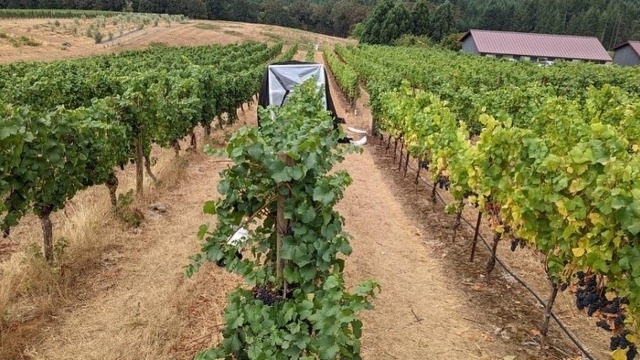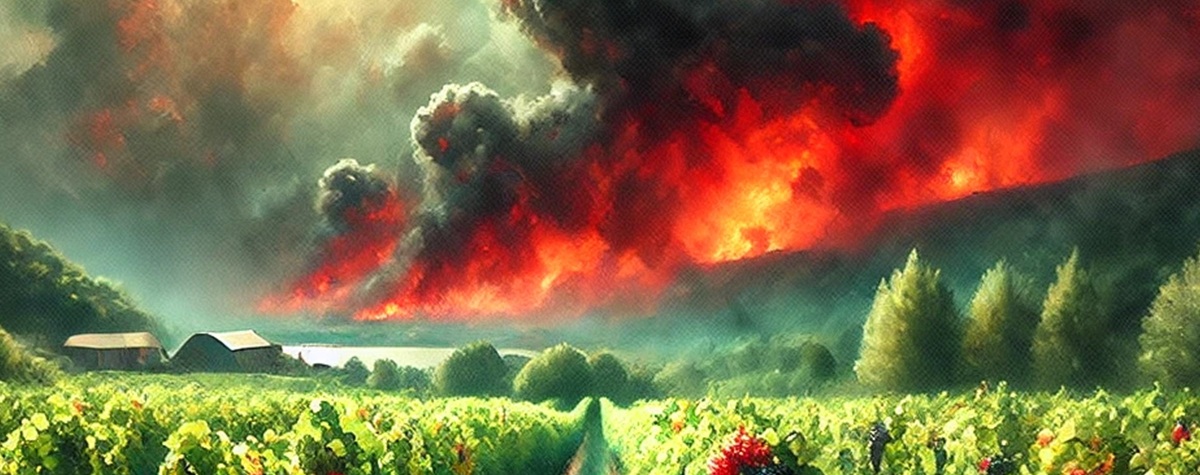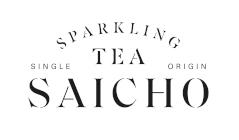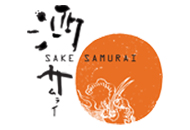“Our findings indicate that there is more forgiveness among consumers for these smoky wines than winemakers think”Wildfires have become an increasingly prevalent threat to viticulture, particularly in regions like California, Oregon, Australia and southern Europe. Beyond the immediate devastation of flames, the pervasive smoke from these fires poses a significant risk to wine grapes, leading to a phenomenon known as ‘smoke taint’.
The Australian Wine Research Institute says that consumers often respond negatively to smoke-tainted wines, making it a critical quality issue for producers.
However, new research from Oregon has found that certain consumer segments are open to wines with subtle smoky flavours. By blending smoke-impacted wines with unaffected ones and employing strategic marketing, producers can turn a potential flaw into a unique selling point.
What the new research says
The study by researchers at Oregon State University and in New Zealand found that some consumers, particularly those that like smoky flavours in food and beverages, are open to drinking smoke-tainted wines. They also found that the type of information on the label can modulate consumer acceptance.“This research provides vital information for the wine industry,” said Elizabeth Tomasino, a professor of oenology at Oregon State. “It demonstrates that with certain wine drinkers there is a potential market for these smoke-impacted wines.”
As the number and size of wildfires grow globally, the wine industry has been heavily impacted. For example, an economic analysis of the 2020 wildfires on the West Coast of the United States estimated wine industry losses up to $3.7bn.

Following the 2020 fires, a research team, led by Oregon State scientists, received a $7.65m grant from the US Department of Agriculture to study the impact of smoke on wine.
Since then, the researchers have made several key advances. They discovered a class of compounds that contribute to smoke impact in grapes. They also developed spray-on coatings for grapes that have shown promise in preventing off-flavours in wines that result from contact with wildfire smoke.
The latest research, published in the journal Food Research International, focuses on consumer attitudes toward smoke-impacted wine, a topic that has received very little attention.
For the study, Tomasino and Jenna Fryer, a doctoral student in her lab, sent smoke-impacted and non-smoke wine made from Oregon Pinot Noir grapes to New Zealand. There, working with Amanda Dupas de Matos and Joanne Hort at Massey University, they recruited 197 participants for the study.
They conducted the research in New Zealand, a region where winemaking has not been significantly impacted by wildfire, because they were interested in how people would respond to the wines. Future research will compare the results from New Zealand to findings from tasting panels in Oregon and Ohio.
With the research in New Zealand, two clusters of consumers were identified, one that liked the smoke-impacted wine (110 people) and the other that disliked it (87 people).
Findings of the study included:
- The smoke-liking group had an average liking score of 6.86 out of a nine-point scale.
- The smoke-disliking group had an average score of 3.26.
- The introduction of labels, versus unlabelled wine, increased liking of the smoke-impacted wines for the smoke-dislikers from just over three to more than five on the nine-point scale. One of the labels overtly referenced wildfires with the words “Smoke Stack, experience the 2020 vintage with this unique, lightly smokey wine”.
- The different labels didn’t have much of an impact on the smoke-likers, but their average scores were still above six, outpacing the dislikers.
“Our findings indicate that there is more forgiveness among consumers for these smoky wines than winemakers think,” Tomasino said. “It seems winemakers have a lot more options if they want to sell wine made with these grapes.”
Effects of wildfire smoke on wine grapes
When vineyards are exposed to smoke, especially during the sensitive periods of grape development, grapes can absorb volatile phenols present in the smoke. These compounds bind to sugars within the grape, forming glycosides that are not initially aromatic. However, during fermentation or ageing, these glycosides can break down, releasing the volatile phenols and imparting undesirable smoky, ashy, or medicinal flavours to the wine – a condition termed ‘smoke taint’.Recent research has identified a new class of compounds, thiophenols, which also contribute to smoke taint. These sulphur-containing compounds are not typically found in wines and can impart meaty or burnt flavours. Their discovery underscores the complexity of smoke taint.

 English
English French
French







.png)


